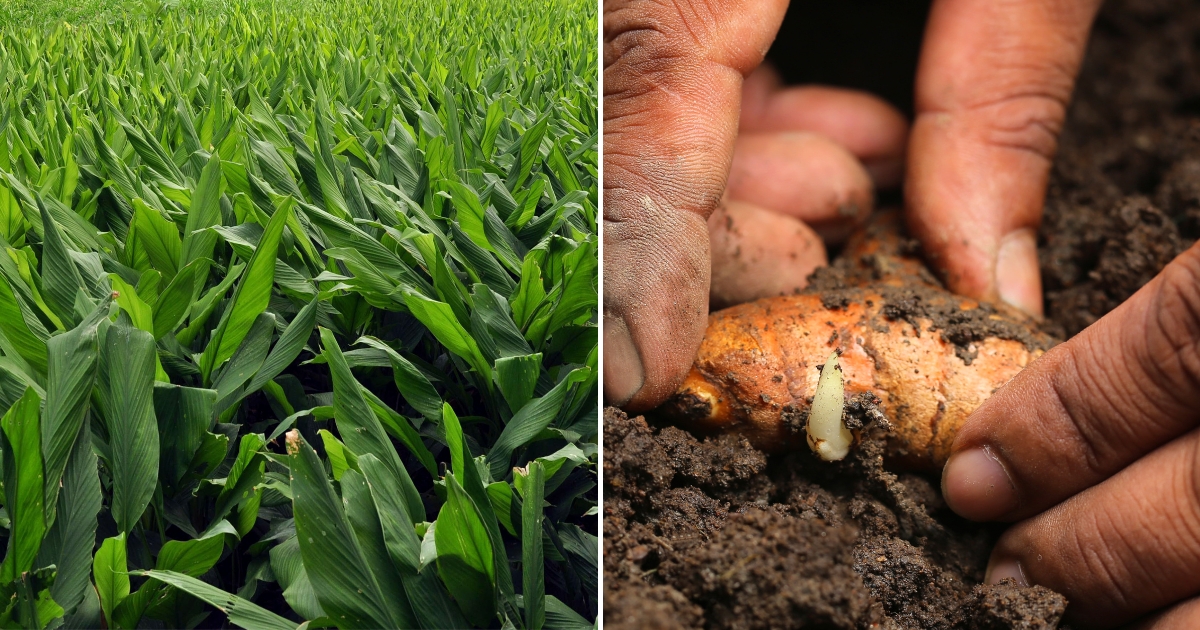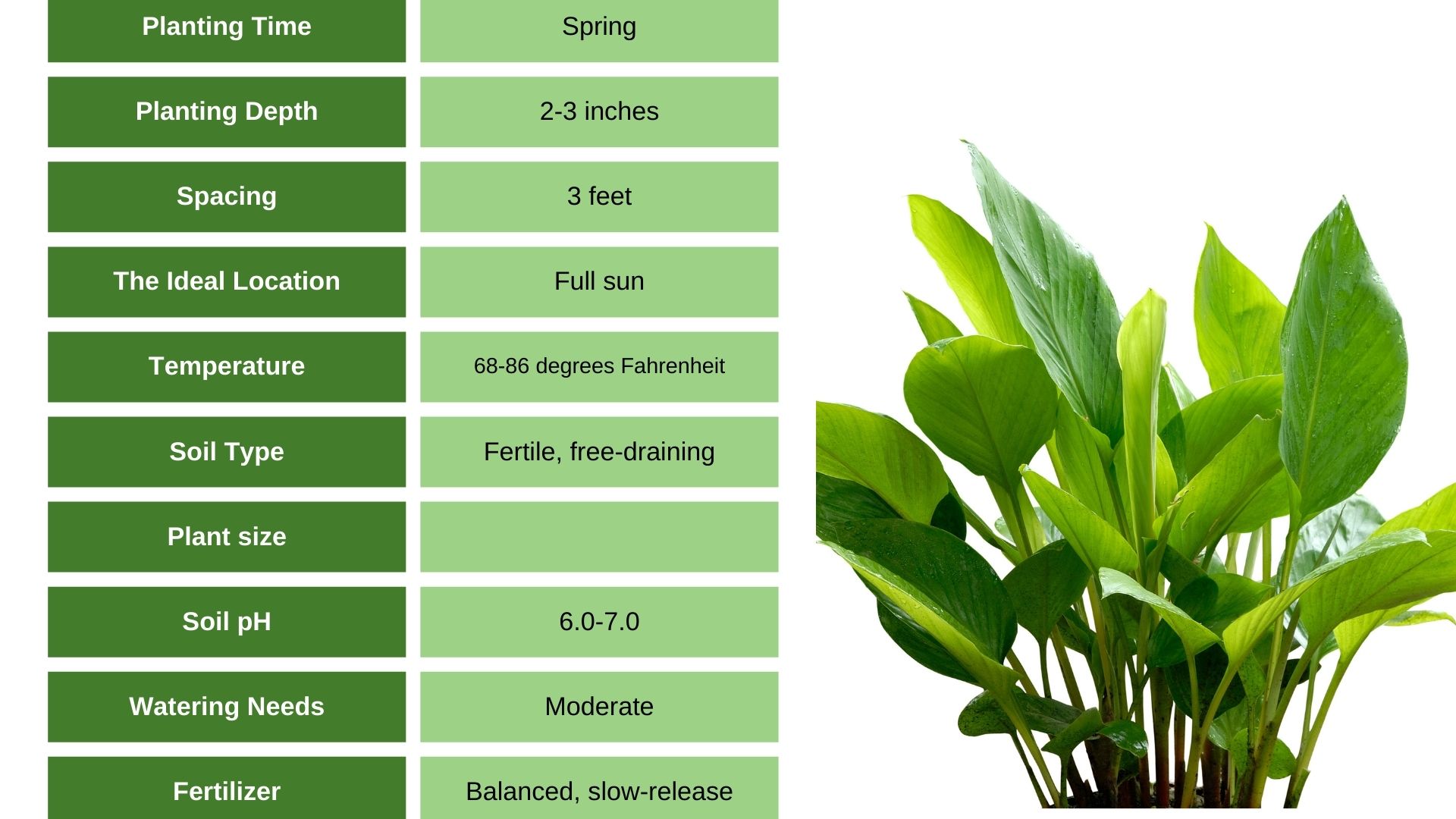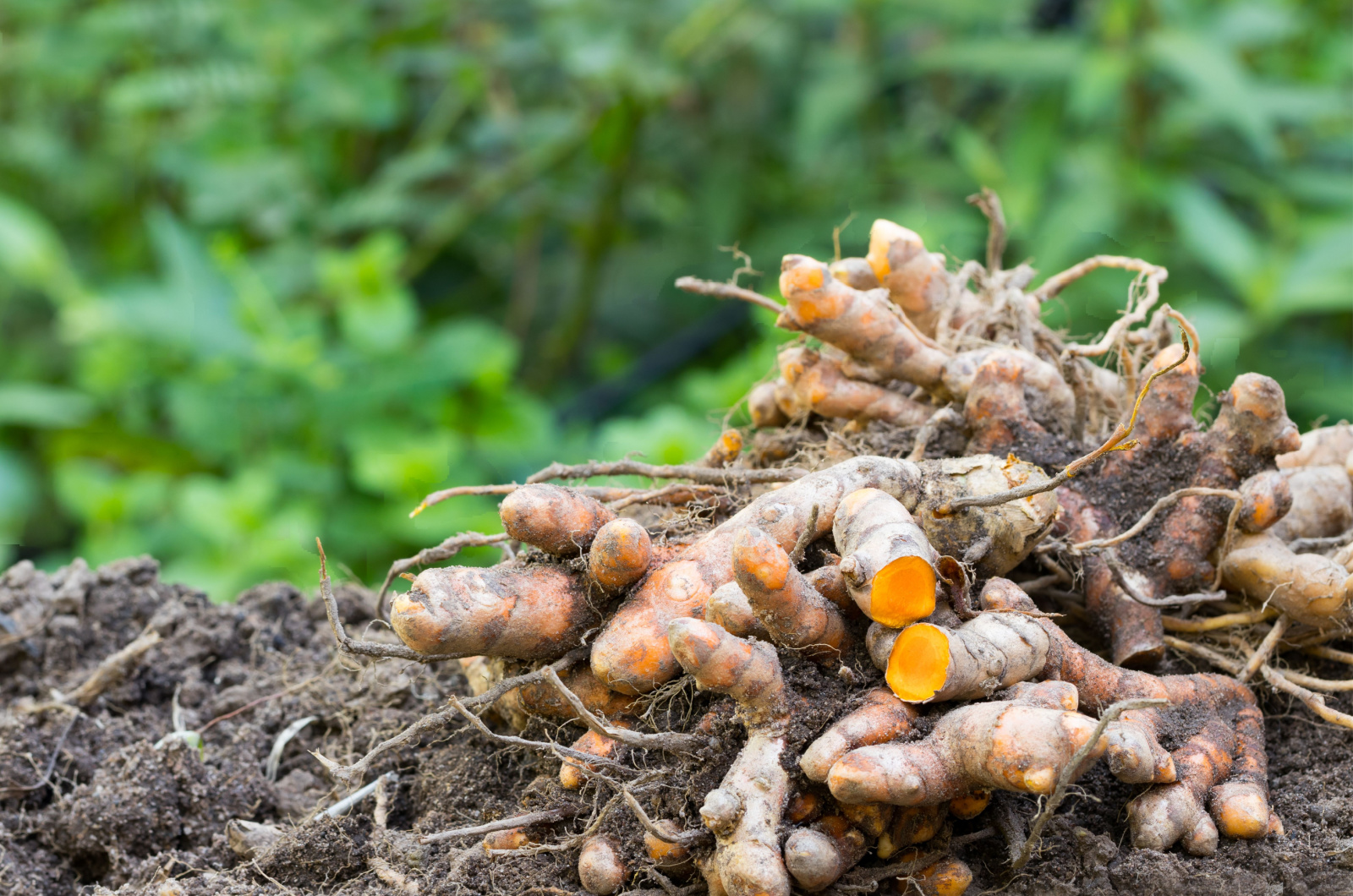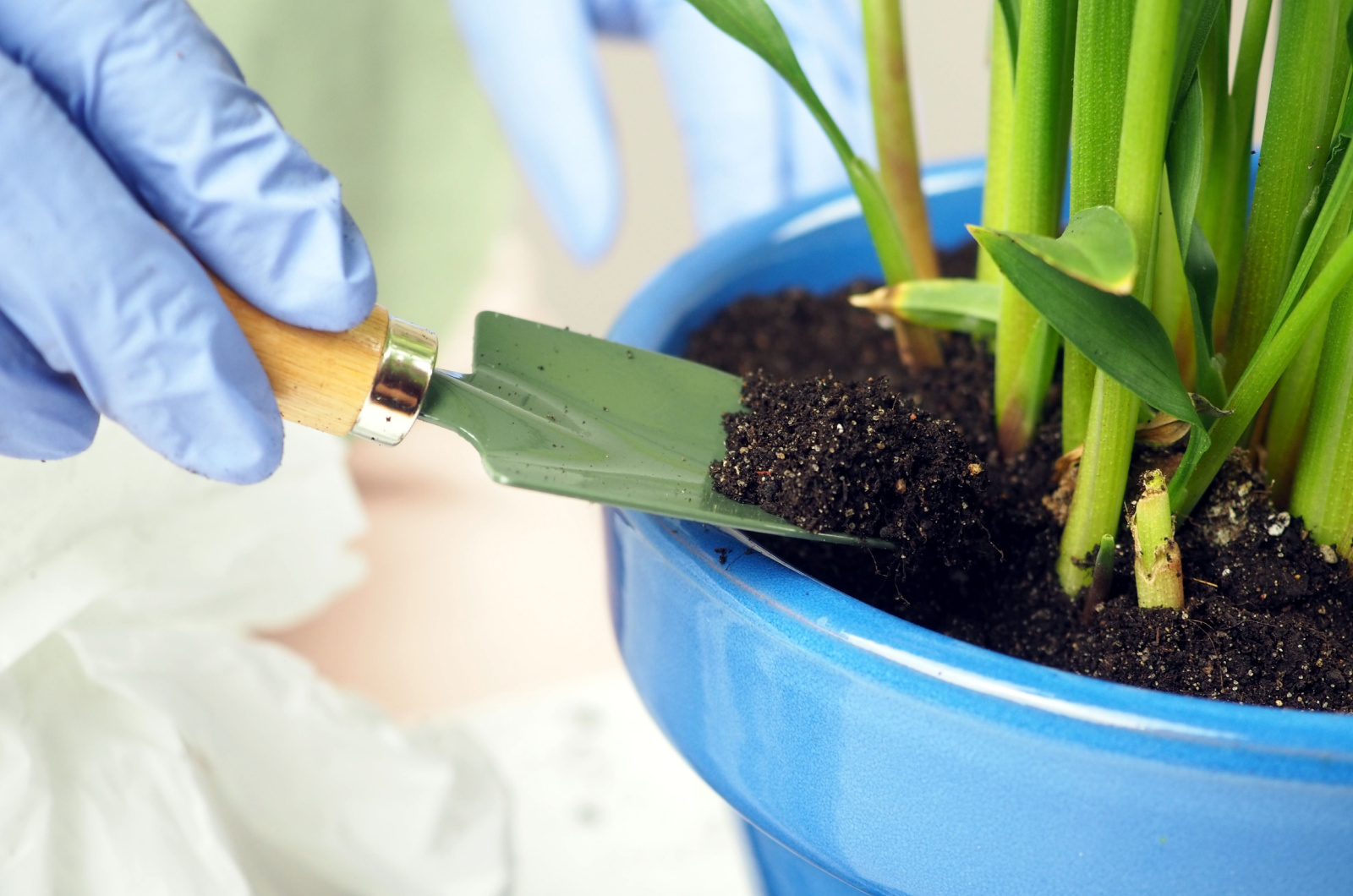I’m sure there isn’t a spice that has gained more popularity in recent years than turmeric. It’s not surprising because multiple research studies have proven that this tropical plant has numerous health benefits.
The great news is that you can successfully grow turmeric in your garden or even inside your home. Since this plant is native to Southeast Asia, you have to mimic such conditions to get the best possible results.
Your particular region will dictate the best technique for growing this powerful plant. But don’t worry, I’ll show you how to grow turmeric and give you some top-notch tips so that you have a thriving plant no matter where you cultivate it.
Here’s a table with an overview of the ideal conditions for turmeric.
Let’s get started!
Planting Turmeric
The first thing you should know about this super-beneficial plant (1) is that it grows from rhizomes. These underground structures store the plant’s energy, and the healthy ones are plump and have 2-3 buds.
Each turmeric rhizome can be divided into portions; each portion can be grown successfully as long as it has at least one bud.
Rhizomes are available in stores or online and you can grow store-bought turmeric at home, just make sure it’s organic.
As mentioned above, this plant is native to warmer climates so we should wait until the spring to plant it. Night temperatures should be above 50 degrees Fahrenheit if you want to avoid damage and poor growth.
If you live in cooler climates, it would be best to start turmeric indoors before spring arrives. Those who have greenhouses can plant their turmeric in late winter. The optimal temperatures for healthy rhizome growth are from 75 to 85 degrees Fahrenheit.
Turmeric started indoors often requires artificial lights and heat mats for successful germination.
After your rhizomes germinate and the danger of frost is gone, you can transplant the turmeric to your outdoor garden.
It’s also advisable to grow this plant on a mound to ensure more drainage because turmeric is highly susceptible to root rot.
Plant each rhizome at a depth of 3-4 inches and ensure spacing of about 3 feet between each plant. Turmeric gets pretty tall when fully mature. Make sure the buds face upwards when planting the rhizomes.
The Best Location
As with all other plants, location plays a major role in development. A warm and sunny spot will ensure the healthy growth of your turmeric.
To be more specific, temperatures should range from 68 to 86 degrees Fahrenheit and the plant needs at least 6 hours of direct sunlight per day.
Turmeric thrives best in a fertile soil type with pH ranging from slightly acidic to neutral (6.0 to 7.5).
I’ve already mentioned that this plant is prone to root rot, so you must ensure perfect drainage. You can mix standard potting soil and compost to boost nutrient levels, and add perlite or horticultural sand to promote drainage.
Caring For Turmeric
Turmeric isn’t a thirsty plant; it does prefer moist soil but you should never leave it waterlogged. You should regularly check the soil moisture content during the growing season and never allow the soil to dry out entirely.
To ensure more nutrients, you should feed this plant with a well-balanced slow-release fertilizer during its active growth period.
Don’t use fertilizers rich in nitrogen because they’ll encourage leaf growth instead of rhizome growth.
This plant requires 8 to 10 months to develop fully and be ready for harvest. The telltale signs of mature turmeric are yellow and dry foliage and stems.
When harvesting this spicy plant, you should carefully dig around the rhizomes to avoid damage. The entire plant should be taken out of the soil. Don’t wash the rhizomes but rather clean the soil with your hands.
If you want to store your turmeric, cure it by leaving the rhizomes to dry in the air for about a week and then transfer them to a cool and dark spot. It will improve the flavor and they’ll last longer in storage.
Pro tip: Choose the healthiest turmeric rhizomes with a few buds and plant them the next season.
Growing Turmeric In Containers
Growing turmeric in the ground isn’t advisable for those who live in colder climates. But the good thing is that these plants do well in containers. You can keep them indoors until the outdoor temperatures increase to the recommended range.
As mentioned, these plants take up a lot of space, so you should select a container that’s about 12-18 inches in diameter and 12 inches deep. Such a container can hold a few rhizomes.
Make sure you grow your turmeric in a container with drainage holes and use a free-draining soil mix.
The perfect time to start rhizomes indoors is in late winter or early spring. Once the nighttime temperature exceeds 50 degrees Fahrenheit you can transfer the container outdoors.
Be careful about soil moisture in your potted turmeric because it’s easy to overwater the soil. Wait until the top few inches of the growing medium dry out and then proceed with watering.
When the temperatures decrease, move your turmeric indoors to overwinter. Make sure the nighttime temperatures in the room you put this plant are above 50 degrees. If you didn’t grow the plant for harvest, you can remove the foliage and take the plant outdoors in spring.
Growing Turmeric Indoors
It’s recommended to grow turmeric outdoors, at least during the warmer months. Those who live in harsh climates can keep these plants indoors year-round.
Greenhouses and conservatories are perfect places for turmeric. If you decide to grow it in your apartment, put it on the sunniest windowsill to ensure enough sunlight.
Water evaporates faster in pots, so you will most likely need to water your turmeric more frequently if you grow it indoors. These plants like humidity, so you should mist the leaves from time to time to maintain moisture.
Turmeric is an extraordinary plant and I’m sure you’ll enjoy growing it. Just follow our guidelines and you’ll be rewarded with a bountiful harvest of healthy and flavorful turmeric crops.
References
1. BSc, K. G. (2021, May 7). 10 Proven health benefits of turmeric and curcumin. Healthline.





